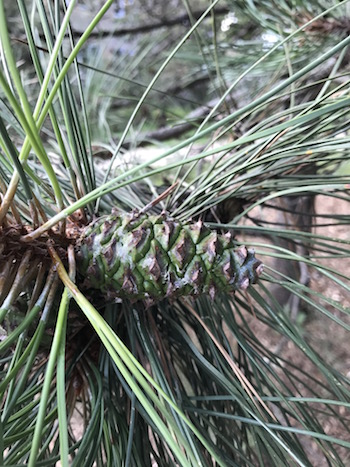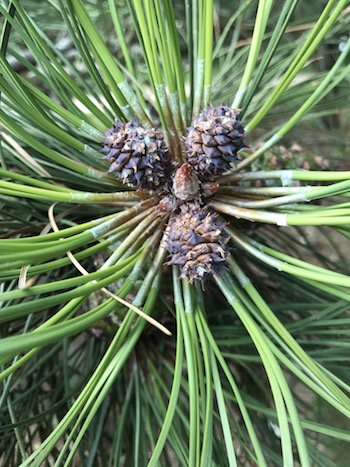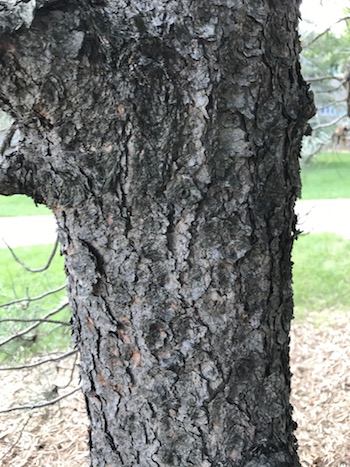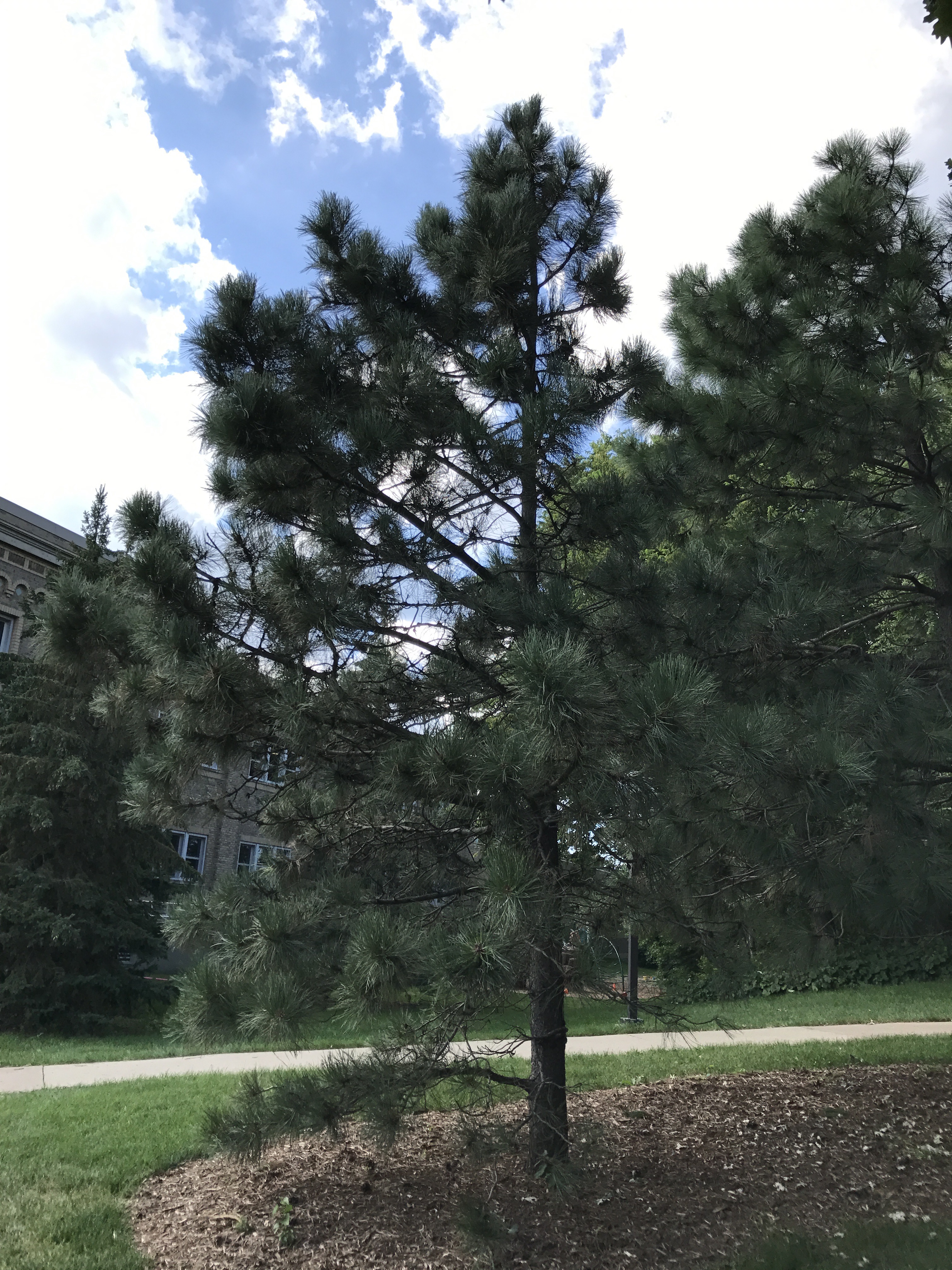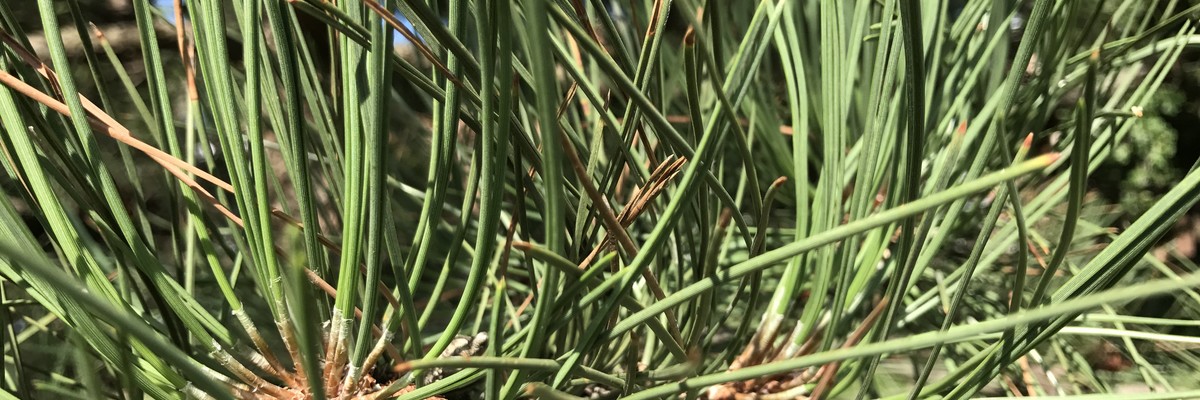
Description
Ponderosa pine is a widely planted pine species from the Western United States. Leaves are long needles, between 12-29” long, occurring in bunches of two or three. The needles are thin and pointed, with slightly toothed edges. Male cones are orange or yellow and are grouped in small clusters near the tips of branches, while female cones are oval and woody. Typically, the lower half of the trunk is without branches. The bark is orangish-brown, with distinctive, scaly plates.
Ponderosa pine is one of the most important timber species in the United States. Most ponderosa timber comes from Oregon, and is used for building construction. Ponderosa pine also has many medicinal and household properties; various Western Native American tribes use the needles as a cough suppressant, boughs to heat sweat lodges, roots to make blue dye, and many different parts for food. Due to its aesthetics, ponderosa pine is also planted as an ornamental landscape tree, even outside of its range. Its large size makes it ideal for open spaces as a specimen tree.
This particular ponderosa pine was planted on July 4th, 1992.
Issues:
According to the United States Department of Agriculture, there are over 200 insects that cause damage to ponderosa pine. Pine cone and western pine beetles cause the biggest problems, while dwarf mistletoe is a major parasitic pest.
Other Resources:
